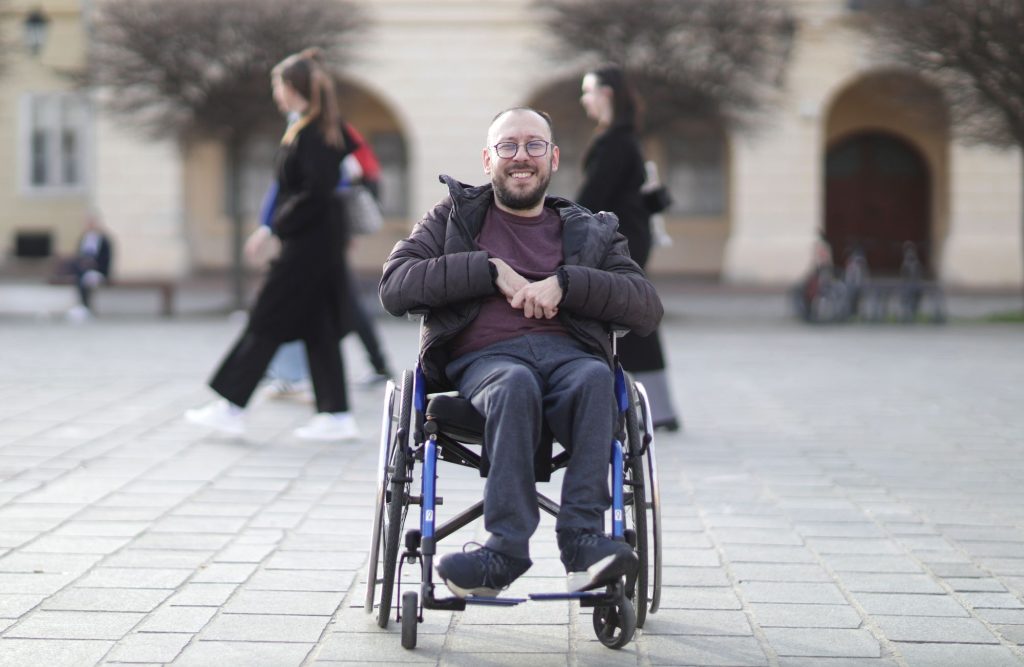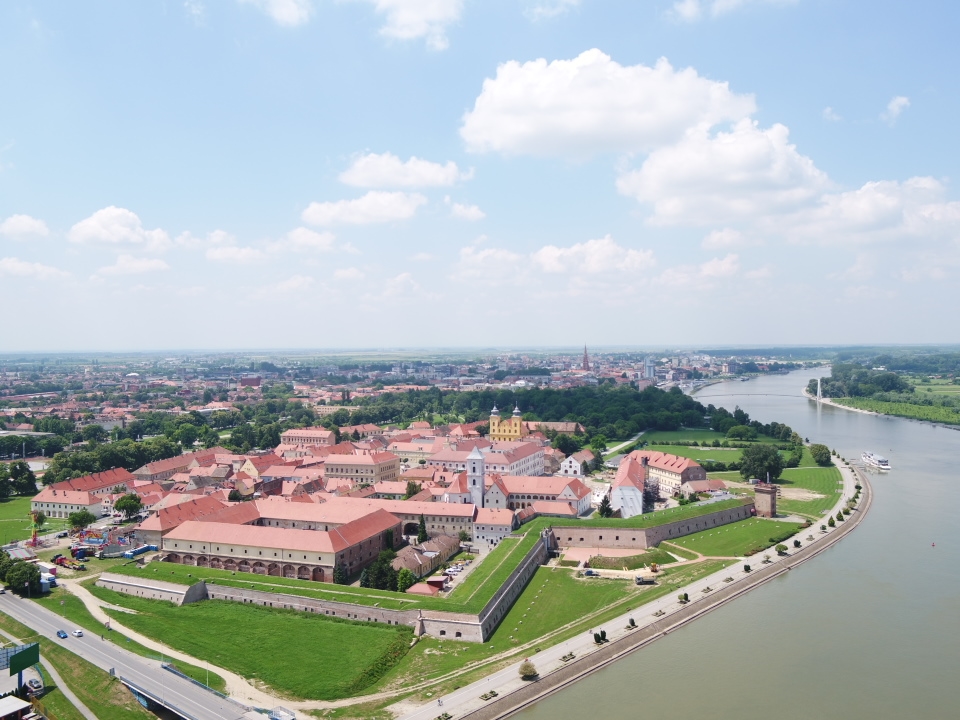OSIJEK – INCLUSION IN URBAN SPACES Tourists with limited mobility can freely explore the city landmarks
Another inclusive star in the city are, of course, the low-floor trams.
Thank you, Europe! And Osijek - every little cobblestone of the city jewel Tvrđa seems priceless when the wheels of my wheelchair effortlessly glide across the renovated old town. We know all too well what it was like before. One of my most unforgettable experiences happened on the night Croatia joined the European Union. After the celebration at the Holy Trinity Square, I nearly kissed the ground when my wheelchair’s front wheel got stuck in one of the old stones. Thanks to my skilled companion, a mishap was avoided, but we had been eagerly awaiting the renovation of the old town for a reason.
This major project, funded with EU money, has made Osijek a more inclusive city, where tourists with limited mobility can now easily and without fear visit the landmarks.

Friendly architecture
Osijek is, in many ways, a disability-friendly city, from its parks or the long Drava River promenade to the open-minded attitude of its people and its architecture. All new buildings are designed with accessibility in mind, as confirmed by local architects.
“Sloped curbs on sidewalks, tactile paving for the visually impaired, and raised symbols in elevators have long been standard. Many existing buildings housing pharmacies, banks, and shops have already installed ramps or lifting platforms. Even the Osijek Co-cathedral is now accessible. The new emergency room and outpatient hospital building is a great example of accessibility-focused design,” says architect Bruno Rechner.
Make sure you don’t stop at the emergency rooms, though, and continue enjoying the city!
Outdoor areas follow strict regulations for ramp inclines, stairways, and handrail heights. Nothing is left to chance. Since we aim for an inclusive society where everyone should have their place, these rules are as important as any architectural standards, says Rechner.
He applied these principles in the design of Osijek’s Freedom Square, a must-see for every visitor.
“This is most apparent along the central north-south axis, where you can move freely from the main pedestrian street (Korzo) to the Street of Hrvatske Republike. The same goes for other directions as well. Elevation differences are handled with gentle ramps, and the flat surfaces provide full access to the square’s contents and its surroundings. The paving pattern alternates between lighter and darker tones, creating a visual effect like a long pedestrian crossing or barcode, which was an intentional designer move. It also makes the space easier to perceive and navigate, particularly for those with visual impairments,” he explains.

Equality and independence
Nika Matančić, a blind student from Osijek, says the city’s public spaces help her feel independent. “Osijek puts a lot of effort into building its roads and curbs. Many intersections have audible pedestrian signals, tactile paths for blind people, and both auditory and visual announcements on public transportation. Guide dogs are allowed on all public transport and in public buildings. These measures promote equality and make higher education more accessible for young people with disabilities,” says Nika, who studies in Osijek’s historic Tvrđa.
She says she wishes e-scooter users would avoid pedestrian paths, but that doesn't stop her from safely getting where she needs to go.
“We should note that Osijek continues to show progress with regards to inclusion and adaptation of urban spaces to the needs of all its citizens. I believe more will be done to improve infrastructure and raise awareness so the city becomes even more accessible. Small changes in our everyday interactions, like respecting parking spaces for people with disabilities, can significantly improve everyone’s quality of life,” says Nika optimistically.
Another inclusive star of the city must be its fleet of low-floor trams, making tram rides possible for those who’ve never had the chance to tick off the experience from their bucket lists.
The city is a living organism, beating in rhythm with the hearts of its residents, and growth with inclusion is the only way forward. Inclusion will never be perfect or meet everyone’s needs completely, but the new public spaces, parks, and pedestrian zones in the works show a commitment to people over cars. Everything Osijek already offers, along with everything that’s coming, brings joy and a sense of responsibility.
Welcome!
Written by: Saša Drinić